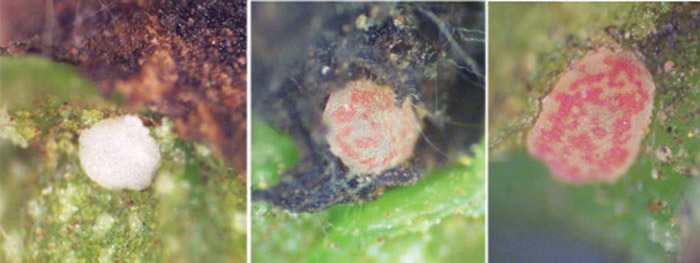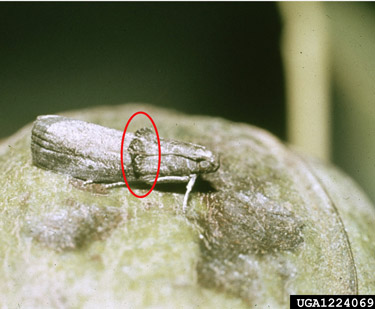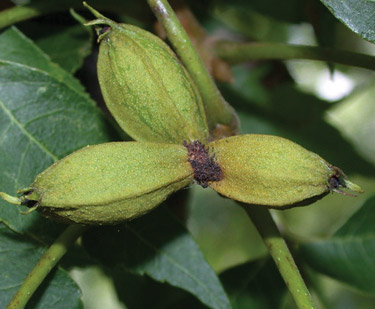Pecan Nut Casebearer
The main insect we need to scout for, currently, during the growing season is the Pecan Nut Casebearer.
Pecan Nut Casebearer start laying eggs on the tip of the nutlets in May or early June. When hatched the larva borrows into the nutlets damaging as much as the entire cluster of pecans. They will then feed for 4 to 5 weeks, then pupate inside and emerge as a moth in 9-14 days.
There are 2 ways to approach staying in front of the larva population:
- Scouting for eggs:
-
Look for eggs on tip of nutlets
-
Eggs are white when laid then will gradually turn red 3-5 days before hatching
-
Scout 10 clusters randomly across your orchard. If two are infested, then application will be needed.
-
Mark the cluster and monitor the egg color change
-
- Pheromone trappings:
- Apply insecticide two days after hatch to kill larva before they enter the pecan.
- Traps should be set by beginning of May.
- When you catch a moth, you will then want to start scouting for eggs.
- Look for eggs on tip of nutlets
- Eggs are white when laid then will gradually turn red 3-5 days before hatching.
- Scout 10 clusters randomly across your orchard. If two are infested, then application
will be needed.
- Mark the cluster and monitor the egg color change
- Apply insecticide two days after hatch to kill larva before they enter the pecan.
- Apply insecticide two days after hatch to kill larva before they enter the pecan.
Make sure you spray based on eggs/larva present not moth numbers. Refer to the pecan section of the MP144 for material and amount to use/A for the application. https://www.uaex.uada.edu/publications/pdf/mp144/MP144_17_FruitandNuts.pdf
Pecan Nut Casebearer Egg Color Change

(Image credit: Oklahoma Cooperative Extension Service)

Pecan Nut Casebearer Moth (Image credit: Jerry A. Payne, USDA Agricultural Research Service, Bugwood.org)

Frass from pecan nut casebearer (Image credit: Oklahoma Cooperative Extension Service)